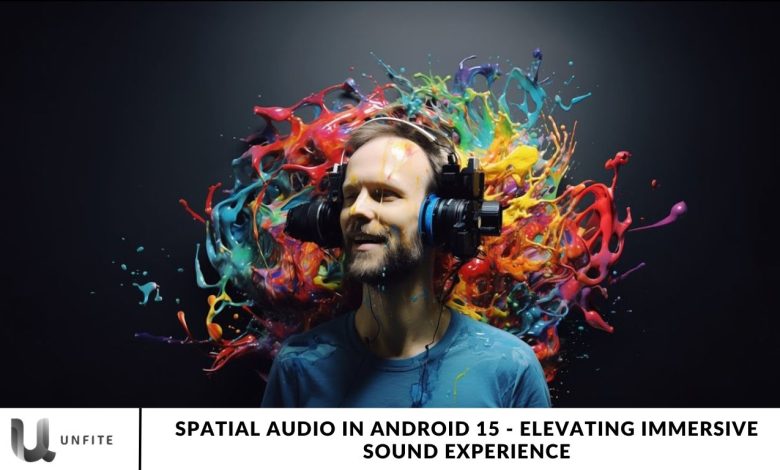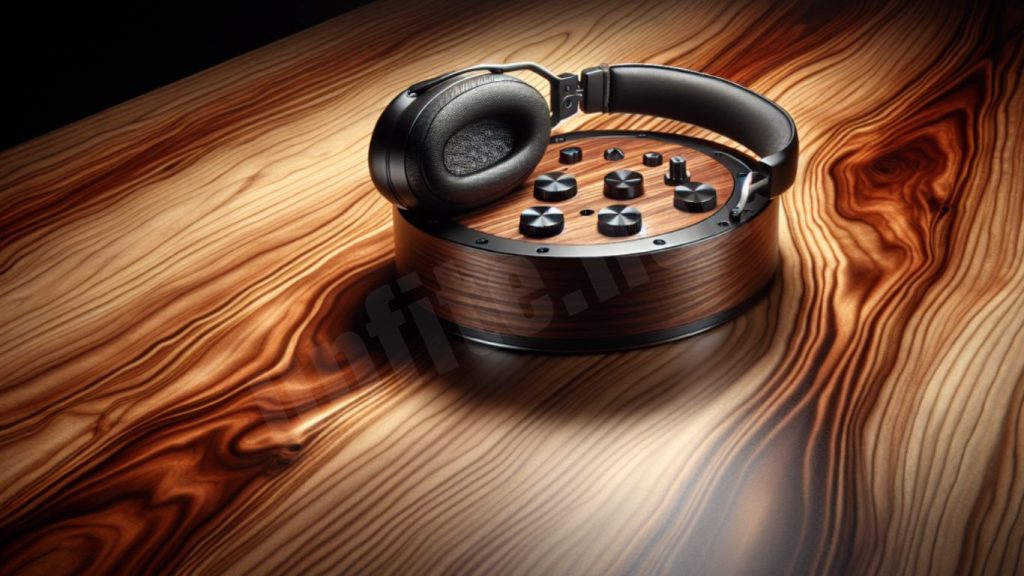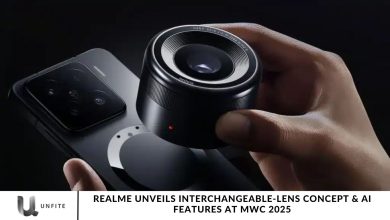Spatial Audio in Android 15 – Elevating Immersive Sound Experience

A recent report hints that Android 15 could bring a 🎧 more immersive spatial audio experience! Speculation suggests Google may offer Dynamic Spatial Audio over Bluetooth Low Energy (LE) 🔋, opening the tech to more LE-compatible devices 🔊. This means reduced head-tracking latency ⏱️, better bandwidth efficiency 📶, and an enhanced audio experience 🎶 for users.
Get ready to experience sound like never before with Android 15! 🎧 This update takes audio immersion to a whole new level with enhanced Spatial Audio capabilities. 📱 Featuring Dynamic Spatial Audio over Bluetooth Low Energy (LE) 🔋, Android 15 unlocks richer, more realistic sound that moves with you. 🎶 Whether you’re enjoying music, watching movies, or gaming, expect lower latency ⏱️, precise soundtracking 🧭, and expanded compatibility with more LE-enabled devices 🔊 — all coming together for an unmatched, immersive sound experience. 🌟
What is spatial audio?
Spatial audio 🎧 is a clever software feature that creates the illusion of sound coming from every direction. It achieves this by building a 360-degree soundscape 🌐, positioning certain sounds at fixed points while allowing others to blend in naturally, just like in the real world 🌳.
With Bluetooth LE 🔋, low-energy transmission boosts device battery life, adding extra convenience to the new Android 15 features. These updates include enhanced hearing aid management, hands-free calling 📞, battery level checks, and a handy Quick Settings tile 🎛️.
Here’s how Android 15 is ready to take your phone’s spatial audio experience to the next level! 🎶
Dynamic Spatial Audio via Bluetooth LE Audio
Android 15 brings dynamic head-tracked spatial audio over Bluetooth Low Energy (LE) Audio 🎧, a massive leap from the static spatial audio on Bluetooth Classic Audio. This upgrade means lower power consumption 🔋, allowing you to enjoy immersive sound for longer without draining your battery.
With sounds moving ideally in sync with your head movements 🧠🔊, the experience becomes much more seamless and realistic. Plus, it will be compatible with more LE Audio-compatible headphones and earbuds 🎶, so you can quickly dive into rich, immersive audio wherever you go!
Improved Spatial Audio Experience
Dynamic spatial audio ensures that sound stays anchored to its point of origin on the screen 📱, not just where your head is positioned 🎧.
Until now, Android’s spatial audio was based on a fixed head position, keeping the listener always facing forward ➡️. With Android 15 and Bluetooth LE Audio 🔋, dynamic spatial audio follows your head movements 🧠, offering a more immersive and authentic 360-degree audio experience 🌍.
This upgrade provides a richer, more cinematic listening experience 🎬, making every sound feel lifelike and engaging 🎶.
Potential for Further Development
This early groundwork lays the foundation for advanced spatial audio on Android devices going forward 🚀. To discover more about the update and which manufacturers are joining in, check out our hands-on review 👀.
The technology opens up opportunities for developers to enhance audio in games, movies, and apps 🎮🎬, creating a richer, more immersive experience.
With spatial audio support now available to phone makers and app developers, we might see a boom in apps and games focusing on spatial audio 🎧. This could encourage users to invest in these apps, offering an immersive sound experience like never before 🔊.
The Evolution of Audio Technology in Android Devices

From Stereo Sound to Spatial Audio
Historical Context: How Audio Technology Has Progressed on Android
Over the years, Android devices have seen a massive evolution in audio technology 📱🔊. Initially, smartphones relied on simple stereo sound—two channels (left and right) producing basic audio. While functional, stereo sound provided only a limited listening experience compared to the complexity of natural sound in the world around us 🌍.
As technology advanced, Android began incorporating more sophisticated audio systems, like surround sound 🎧, which made audio more immersive. However, spatial audio took it to the next level, transforming how we hear on mobile devices.
Spatial audio creates an illusion of sound coming from all directions, simulating a 360-degree soundscape 🎶. It uses advanced algorithms and head-tracking sensors to make audio feel more natural and immersive.
Critical Differences Between Stereo and Spatial Audio
- Stereo Audio: Stereo sound divides audio into two distinct channels—left and right. It creates a sense of directionality, but it doesn’t mimic the full complexity of real-world sound 🧠.
- Spatial Audio: Spatial audio adds depth, height, and width, creating a whole 360-degree sound experience 🌎. With head-tracking, the audio moves with your head, giving you a more natural and immersive feeling 🎧🎬.
What’s New in Android 15’s Spatial Audio?
Introduction to Android 15 and Its Advancements
With Android 15 📲, Google introduces a significant upgrade in audio technology. The update brings dynamic spatial audio, adding a new level of immersion for users 🔊.
While earlier Android versions featured basic spatial audio, Android 15 introduces dynamic head-tracking, which adjusts audio in real time as you move your head. This change makes gaming, music, and movie experience more lifelike and engaging 🎮🎥.
Overview of Dynamic Head-Tracked Spatial Audio
One of Android 15’s standout features is dynamic head-tracked spatial audio 🧠🎶. Unlike static spatial audio, this technology ensures that sounds stay anchored to their source and shift naturally as you turn your head.
For example, if you’re playing a game and turn to the left, the sounds will move with you, making the experience feel like you’re truly part of the action 🎮. The sound adapts to your movements, bringing a deeper level of immersion 🕹️.
Why Android 15 Is a Game-Changer for Immersive Audio
Android 15 is a game-changer for mobile audio 🎧. Offering dynamic spatial audio and head-tracking takes immersion to a whole new level. Now, audio will shift naturally, as if the sound is coming from the real world, not just through your headphones.
Additionally, Android 15 supports Bluetooth Low Energy (LE) 🔋, which enhances battery efficiency while delivering premium spatial audio. This means you can enjoy longer, uninterrupted listening sessions without draining your device’s battery 🔋⚡.
How Dynamic Spatial Audio Works in Android 15

Understanding Dynamic Spatial Audio
Explanation of Dynamic Head-Tracked Spatial Audio Technology
Dynamic spatial audio enhances the traditional spatial sound experience by tracking your head movements in real time 🧠🎧. Unlike static spatial audio, where the sound remains fixed in one place, dynamic spatial audio constantly adjusts the sound’s position as you move your head, creating an immersive 360-degree audio experience 🌍🎶.
Using head-tracking sensors, the system detects your head’s position and changes the sound’s origin to match, ensuring the audio feels like it’s moving with you in real-time. Whether you’re turning or tilting your head, the audio shifts accordingly to make it seem like it’s coming from all directions 🔄🎧.
How It Tracks Head Movements and Adjusts Sound Positioning in Real-Time
The technology works by using sensors in your device or headphones to monitor your head’s movements 🕹️. As you turn your head or move around, the sound adjusts to stay anchored to the correct position, mimicking real-life experiences 🎮.
For instance, if you’re watching a video 🎥 and turn your head, the sound will shift in sync with your movement, just like it would in the real world 🌎. This dynamic audio shift creates a more immersive and realistic experience, making you feel like you’re part of the action 🎬.
The Role of Bluetooth Low Energy (LE) Audio
Benefits of Bluetooth LE for Improved Power Efficiency 🔋
One of the critical advancements in Android 15’s spatial audio is the use of Bluetooth Low Energy (LE) 🌀. Bluetooth LE is designed to deliver high-quality audio while using less power, ensuring you get a long-lasting audio experience without draining your device’s battery ⚡🔋.
Bluetooth LE allows for faster connections and supports advanced audio codecs, ensuring that your headphones or earbuds deliver the best sound possible 🎧🔌, all while conserving power.
Impact on Battery Life and Extended Audio Sessions
With Bluetooth LE, you can enjoy longer listening sessions 🎶 without needing to recharge your device constantly 🔋. Whether you’re playing games 🎮, listening to music 🎧, or watching videos 🎬, Bluetooth LE ensures that the audio remains smooth and high quality while using less battery, making it perfect for extended sessions without interruptions ⚡📱.
Frequently Asked Question
What is spatial audio in Android 15?
Spatial audio in Android 15 is an advanced audio technology that creates a 360-degree sound experience, making it feel like the sound is coming from all around you. It adjusts the audio in real-time based on your head movements, providing an immersive, dynamic listening experience.
How does dynamic spatial audio work?
Dynamic spatial audio uses head-tracking technology to detect your head movements. As you turn or tilt your head, the sound adjusts accordingly, ensuring that audio remains anchored to its source and moves naturally with you for a more immersive experience.
What is the difference between stereo sound and spatial audio?
Stereo sound uses two channels (left and right), while spatial audio creates a 360-degree sound environment that surrounds you. Spatial audio is more immersive, making it feel like sounds come from different directions, providing a more profound and more natural audio experience.
How does Bluetooth Low Energy (LE) improve spatial audio in Android 15?
Bluetooth LE helps improve battery efficiency 🔋 by reducing power consumption while transmitting high-quality spatial audio. This allows you to enjoy longer audio sessions without draining your device’s battery, providing a seamless experience without interruptions.
Will spatial audio in Android 15 work with all headphones?
Spatial audio in Android 15 is designed to work with compatible Bluetooth LE audio devices, including headphones and earbuds that support this technology. Over time, more devices will support dynamic spatial audio for enhanced compatibility.
Can I use dynamic spatial audio with non-Bluetooth headphones?
Unfortunately, dynamic spatial audio in Android 15 is designed to work with Bluetooth LE-enabled headphones or earbuds. Wired headphones do not support the dynamic head-tracking feature and may not offer the same immersive experience.
Does Android 15’s spatial audio support head-tracking?
Yes! Android 15 introduces dynamic head-tracked spatial audio. As you move your head, the system adjusts the sound’s position in real time, making the audio feel like it’s coming from all directions and moving naturally with you.
What types of apps will benefit from Android 15’s spatial audio?
Android 15’s spatial audio will benefit apps for games, movies, music, and virtual reality. Games, in particular, will offer a more immersive experience, with sounds changing based on movement, enhancing the realism of the action.
Will spatial audio in Android 15 work for phone calls?
Spatial audio in Android 15 is primarily designed for entertainment media like music, movies, and gaming 🎮🎶. However, there may be future updates or specific apps that integrate spatial audio for calls, offering a more natural audio experience.
Is dynamic spatial audio available for all Android devices?
No, dynamic spatial audio in Android 15 requires specific hardware and software support. You’ll need Bluetooth LE-compatible headphones and an Android device that supports this feature. As more devices are updated, this feature will become more widely available.
Conclusion
Android 15 brings a significant leap forward in immersive audio with its support for dynamic spatial audio. Utilizing head-tracking technology and Bluetooth Low Energy (LE) transforms the way we experience sound, making it more natural and surrounded by nature. Whether you’re gaming, watching movies, or listening to music, this update ensures that the sound moves with you, creating a more realistic and cinematic experience 🎮🎬🎧.
The integration of Bluetooth LE not only ensures enhanced power efficiency, allowing for longer audio sessions without draining your device’s battery brutally, but also paved the way for the broader adoption of spatial audio technology across various devices and apps. With Android 15, the future of audio on smartphones is more immersive and dynamic than ever before 🔋🎶.
As more apps and devices adopt this technology, the potential for interactive and immersive experiences grows. Spatial audio is no longer a luxury but an integral feature that will redefine how we engage with audio content in our everyday lives 🌍🎧. So, get ready to experience sound like never before with Android 15’s spatial audio—a game-changer for mobile audio!




